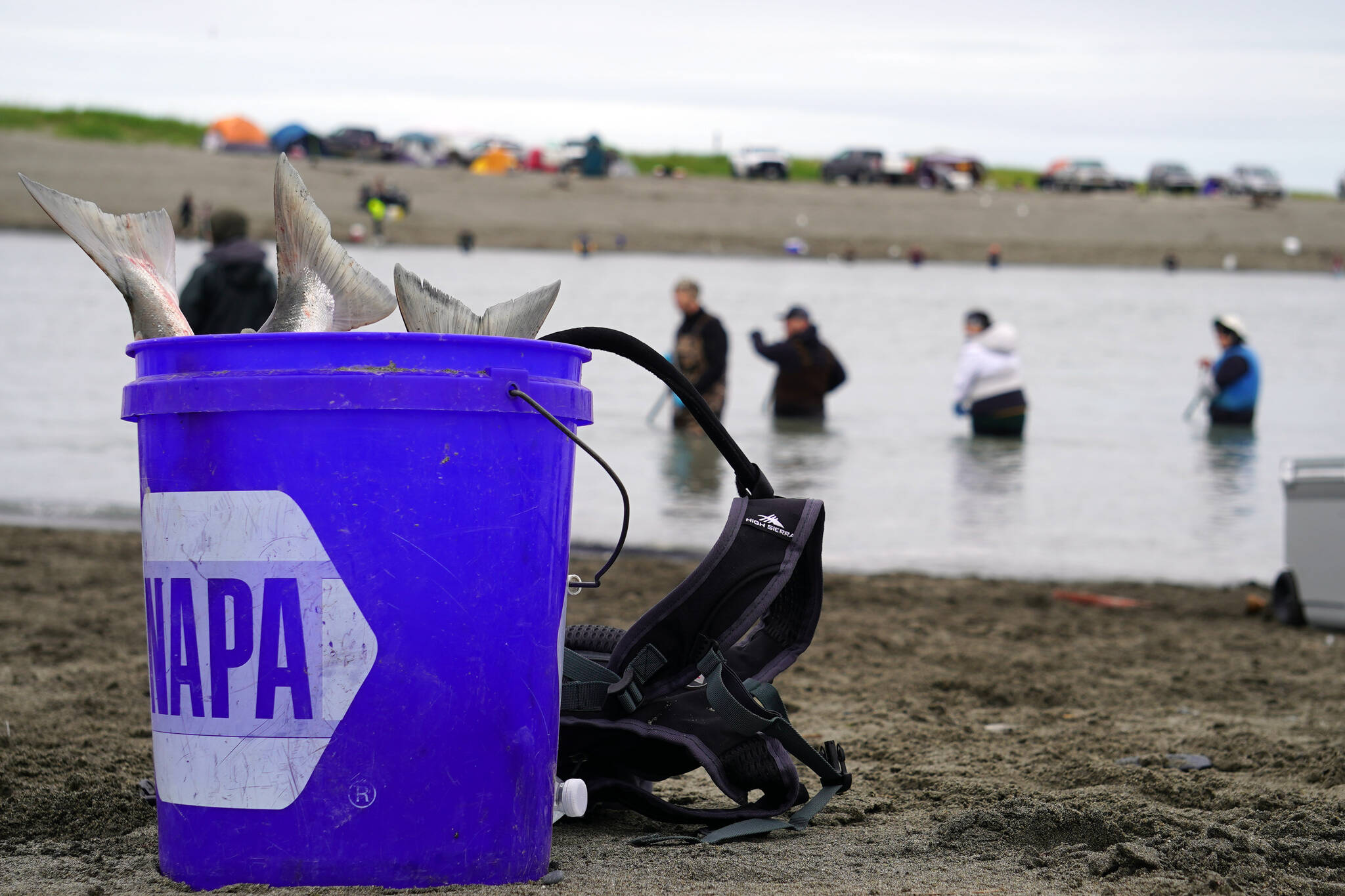The Kasilof River personal use sockeye salmon dipnetting fishery will open on Tuesday. Dipnetting will be allowed at all times until Aug. 7.
Fishing is allowed at the mouth of the Kasilof River. Last year, owing to high numbers of sockeye salmon counted on the river, the area open to fishing was expanded in the days before opening. Though this year’s sockeye counts are outpacing last year’s by 28,000, no such announcement has been made as of Thursday evening.
Check adfg.alaska.gov for updated emergency orders.
Around 53,000 sockeye salmon have been counted this year in the Kasilof River sockeye run, according to department counts, with more than 15,000 of those being counted on Wednesday. More fish have been counted at the North Bank each day this year than the South Bank.
The optimal escapement goal for sockeye salmon in the Kasilof River, set by the Board of Fisheries, is between 140,000 and 370,000 sockeye. In each of those last four years, the goal has been exceeded. Last year, 930,000 sockeye escaped.
According to the Department of Fish and Game’s website, the peak harvest days for sockeye salmon on the Kasilof River are between July 11 and 21. It also notes that the fishery is managed by emergency order, meaning that regulations can change and the fishery can be closed “at any time.” Updated information should be acquired before going fishing.
Most fishers fish the incoming tide, in part because the mouth of the Kasilof River gets muddy. Previous Clarion reporting says they’ll stick around through the slack and possibly even keep at it as the tide starts to go back out.
Only Alaska residents can participate in a personal use fishery. Any angler 18 years old or older must possess a valid sport fishing license. A permit, which is effective for an entire household, must also be acquired before fishing. The department says permits can be obtained from private vendors or at their offices — like the Fish and Game office in Soldotna. A list of private vendors can be found on the department website
Viewed on the department’s online store, a sport fishing license costs $20, while the Upper Cook Inlet Personal Use Salmon Permit is free.
On the permit, the date, location and harvest by species must be filled in each time an angler fishes — even if no fish are caught. All reporting must be submitted via the department’s harvest reporting webpage by Aug. 15, even if the permit was left unused or if no fish were caught for the season. Failure to report by the deadline will result in the loss of personal use fishing privilege in the next year, the department says.
The bag limit for Upper Cook Inlet personal use salmon fisheries — which include not just the Kasilof but also the Kenai River and Fish Creek — is 25 salmon and 10 flounder for the holder and 10 additional salmon for each additional household member. Each caught salmon must be “marked” by clipping both ends of the tail fin using scissors or shears. Marking must be done “before the salmon is concealed from plain view” or the angler may be subject to fines.
No king salmon may be kept in the Kasilof River dipnet fishery.
The north shore of the Kasilof River can be accessed via Kasilof Beach Road, off the south end of Kalifornsky Beach Road. The department warns against driving through private property signs at the cannery and parking on the sand dunes — which damages the beach grass. It recommends using four-wheel drive when parking cars off the road because of the softness of the sand in the area.
The south shore can be accessed via North Cohoe Loop Road off the Sterling Highway. The department says that when the pavement turns left toward the south, anglers should continue straight to the west on the unpaved dirt road. The mouth of the Kasilof will be around a quarter-mile north along the beach.
“Four-wheel-drive is necessary” to access the south shore, it says. “Don’t drive anything you can’t get unstuck.”
Dipnetting from a boat is also allowed in the same area, with the same requirements for permitting, limits and marking. All caught fish must be recorded on the permit and have clipped tail fins before leaving the area or anglers may be subject to a fine. The department notes that there are no nearby public boat launches — the closest is upstream of the Sterling Highway bridge.
Vehicles may not be used to cross the dunes on either side of the river, and there are no trash or toilet services provided — anglers will need to remove everything they bring to the area.
More information about fishing regulations and availability can be found at adfg.alaska.gov.
Reach reporter Jake Dye at jacob.dye@peninsulaclarion.com.

